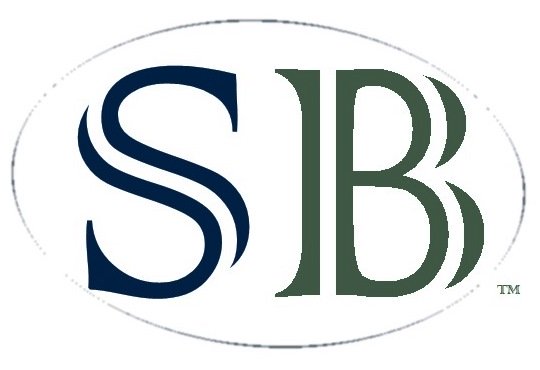How to Write an Introduction:
5+ Ways to Start Your Essay

You have the assignment, but don't know how to write an introduction. Where do you start? What should you say? Your brain is blocked, and you need to write something ... anything. And quick!
It happens to the best of us. Professional writers and students alike.
Think of introductions this way: they simply establish the direction your writing is going to take and entice the reader to come along on that journey.
Good introductions grab the reader's attention and pull them further into your writing work.
Good introductions are usually rewritten bad introductions!
That's right! Usually writers just start writing, and at the end they revise the whole paper, including the introduction.
So, if you don't know where to start here's what I suggest...
The first suggestion ...
Write the body of your paper first. Or rather, just start writing--something. Anything!
Oftentimes, as the words gather on the page, you get ideas. And, one of those ideas might be a better way for how to write an introduction.
If that happens, just write the idea on the paper (or a post-it note), and then when you finish the essay go back to your note and make any changes.
However, if you're like me, you want to have a few ideas for how to write an introduction first--just to get you started.
So, here are 5 (plus a few extra) ways for how to write an introduction.
How to Write an Introduction: 5+ Ways to Start!
#1 Begin with a Quote
When you think about how to write an introduction, you can capture the reader's attention quickly by using a quote.
Pick one that relates to the ideas you present in your paper. Something that just says exactly the message you are trying to convey, only using different words.
Whatever the subject, be sure the quote fits with it. Don't select any old quote to begin. It has to have meaning.
You can find quotes anywhere. One of my favorite quote sites lists quotes by various topics and by specific people. So, think about your essay or paper and decide what type of quote you want and look it up by topic (or person, for that matter).
Here's an example of how to write an introduction using a quote.
Example:
Dr. Martin Luther King said, “And so even though we face the difficulties of today and tomorrow, I still have a dream.” The adversity I experienced over the past few weeks learning a new language and culture made me suffer. However, I still dream of learning the language. I want to immerse myself in the culture. And so, I will continue to ask questions and practice speaking, even when others make fun of me. I have a dream today. That one day I will be fluent in German and blend in with the locals.
#2 Begin with a "Snap Shot"
A snap shot is a mental picture. Essentially, you give the reader a mind photo--they see your ideas in their mind as they read.
In other words, use words that describe what you (as the writer) see, hear, taste, touch, and smell so the reader can experience what you do in his or her mind.
Often times, I call this creating a mental movie with your writing--except here you're just doing that in the intro., i.e. you're only creating one picture or one scene for the introduction of the essay or writing piece. (As a side note, you want your whole writing piece to create a movie in the reader's mind. A movie picture for visual topics and/or a movie-like picture to understand abstract concepts or ideas.)
Example:
My legs ached from the run. And yet, I had to continue walking to the subway stop. With every step, I hoped it would arrive the moment I reached the stop. It was cold. Misty. The tips of my toes were wet. I just wanted to go home. Then I saw it … 7:54! Anger flashed across my face. Seven-fifty-four! SEVEN-FIFTY-FOUR!!! I would have to stand in that cold, dark, wet place for 35 more minutes! I was angry. But, I took a deep breath and waited anyway.
Advertisement:
#3 State a Profound Fact
Want to startle your reader?
One way to do so is to state some extraordinary fact. Something that is mind-blowing. Something you're reader will never forget.
WAIT! Before you get carried away thinking of all kinds of wild things that will shock your reader, remember, it must fit with the subject matter of your paper.
If it's a research paper, it is sometimes a good idea to introduce the most startling thing you learned in the introduction. That keeps your reader reading. See the example below ...
Example:
According to Maslow, only one in one hundred people ever become self-actualized because of our social construct of rewarding based on love and other needs (Simplypsychology.org, 2012). This might explain why I always procrastinate with my homework. I don’t become self-motivated, because there is no official reward for doing the work--except for the grade. No chocolate. No twenty dollar bill. No souvenir. No reason to do my work. And, this house has many distractions. Distractions that are more exciting--more rewarding at the moment--than doing my work. What I learned from this though, is that procrastination is bad. I embarrassed myself. I didn’t see the reward hidden inside the experience. If I had, the teacher may have given me the A, instead of my classmate.
#4 Begin with a Question
This is for those people who love to be rhetorical. You ask a question that your reader may or may not be able to answer.
Then, you could, end your piece with the answer.
For research papers, may be you present the question and then your subsequent paragraphs are the evidence to support the answer, which you share at the end of the paper.
Or, you can simply begin by engaging the reader with a question. See below.
Example:
Thinking back to your childhood, what was your favorite toy? Do you remember that one special thing you may have taken everywhere? In some cases, it was like an appendage, attached to your bag, arm, or side. That’s what this travel experience is like for me. I don’t think I’ll ever let go of it. It’s attached to me like my hand. It’s part of my life and engrained in my soul. Even though I leave in just a few days, I’ll be back. It may take a little time for me to physically return, but I can visit it in my mind--and feel it’s presence in the depths of my soul whenever I choose.
#5 Begin "in Medias Res"
In media res is Latin for "in the middle of things," and it's a great way to start a narrative paper or persuasive piece.
This means you start with the action.
For example, let's say you're writing about why you should do lawn work. Start your essay showing you or someone doing lawn work. Or, like in the example below, the writer shows why it's importance to stay calm around bees.
Example:
WACK! WACK! SWOOSH! I swatted as the bee zipped around my head. And just as I’m about to swat again, I felt it. The piercing pain flashed through my entire body. I was scared. I didn’t know whether or not I was allergic to bees. I raced to the freezer, but there was no ice. Then I bolted to the bathroom for a washcloth, which I saturated with cool water and placed on my arm. I avoided death, but I didn’t avoid a very valuable lesson. Stay still when bees buzz near you. And, keep your food inside a bag or fridge during the summer. It’s a simple lesson, but I could have averted a painful sting.
Other ways to begin ...
You could also open with ...
... an announcement. For example, "This is not a cookbook for the gourmet. These recipes are strictly for cooks on a tight budget!"
... a bold and challenging statement. For example, "Contrary to what your parents may have told you, eating chocolate is good for you."
... a quotation from somebody close to you. For example, "'You will never guess what happened today,' said my best friend, Sue, as she showed me the ten dollar bill she found."
... a riddle or puzzle that the reader must grapple with. For example, "What has two brown eyes, fluffy hair, and a little wet tongue? That's right--my dog, Curly."
... a personal experience. For example, "At the time, it was the worst thing that could have happened to me. However, I realized later the spinach between my teeth wasn't that noticeable."
... a personal feeling--share how you felt during a particular moment. For example, "The lump in my throat was the size of a soccer ball! Sweat trickled down my face. I held the microphone in my hand, ready for the first note. But, how would it sound?"
Keep Your Reader Interested! (Even if it's only your teacher or the test scorer!)
Writing is a creative activity.
You get to choose how the reader joins the adventure you created from your mind.
To keep the reader reading, think about what it's like for them to read your work.
Think about how they will react based on how you start and decide how you want to leave them.
While your paper is an expression of yourself, it is also supposed to show your instructor (or boss) that you did the assignment.
So, always keep the assignment in mind--whether you're writing the introduction, body, or conclusion of your paper.
And--double check that you included what you needed to include in the assignment, proofread it one last time, and then happily turn it in.
Advertisement:







